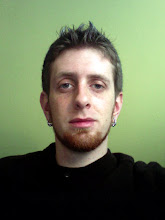As a child I was mainly drawn to the modern art appeal of the bulk of klee's work, where he creates seemingly random fields of colour painted on a rough canvas or burlap. As I grew interested in his teachings I eventually warmed up to what I had always taken to be untalented sketches. I simply had no concept of what he was trying to express, a short sight that I try relentlessly to correct in my current appreciaton of art.
This is a watercolor painting titled Abstract trio(1923)
 This quote from a lecture on synesthesia written by Dr. Hugo Heyrman that could express more eloquently than I, what Klee's inspiration may have been.
This quote from a lecture on synesthesia written by Dr. Hugo Heyrman that could express more eloquently than I, what Klee's inspiration may have been.In this watercolor we see an interaction between three forms —a configuration of growth, patterns and traces. They might represent the abstract sound patterns of three voices, or three instruments of a performing trio. The allusion to music is strengthened by the rhythmic interplay of lines and forms. Klee himself referred to the nervously line of his drawings as a form of 'psychic improvisation'. In the work of Klee, (like Kandinsky) there are many spiritual correspondences between music and the qualities of color and form (20).
In any case, It goes to show that excellent art is in the mind, not necessarily on the page.

No comments:
Post a Comment